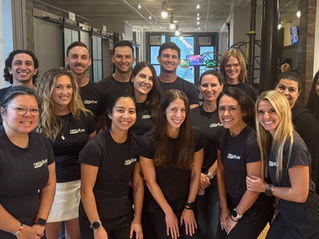Common Golf Injuries: Prevention and At-Home Treatment
- Ryan Choi

- Jun 5, 2025
- 2 min read
Updated: Jan 2
Golf is a sport that demands precision, control, and repetitive motion. While it may not seem as physically intense as other sports, golfers frequently experience injuries due to overuse, poor mechanics, or lack of proper conditioning. As physical therapists, we understand the importance of movement efficiency, injury prevention, and rehabilitation to keep you playing pain-free for years to come.
Common Golf Injuries and Their Causes
Low Back Pain – The rotational forces of a golf swing put significant strain on the lower back, leading to muscle strains, disc issues, or joint irritation.
Golfer’s Elbow (Medial Epicondylitis) – Repetitive gripping and swinging can cause inflammation of the tendons on the inner elbow.
Tennis Elbow (Lateral Epicondylitis) – Despite its name, this condition is also common in golfers, affecting the outer elbow due to improper wrist mechanics.
Shoulder Injuries – The repetitive nature of the golf swing can lead to rotator cuff injuries, impingement, or labral tears.
Knee Pain – The rotational force during a golf swing can stress the knee joints, leading to meniscus injuries or ligament irritation.
Wrist and Hand Injuries – Repetitive impact from striking the ball (or the ground) can result in sprains, tendonitis, or even fractures in extreme cases.
How to Prevent Golf Injuries
Strength and Mobility Training
Strengthening the core, shoulders, and hips is crucial for stabilizing your golf swing and reducing stress on the spine.
Incorporate mobility exercises for the thoracic spine, shoulders, and hips to improve your swing mechanics and avoid compensations that lead to injuries.
Proper Warm-Up and Cool-Down
Start with dynamic stretches such as torso rotations, leg swings, and shoulder circles before playing.
Use resistance bands for shoulder activation and light hip mobility drills to prepare your body for movement.
Swing Mechanics and Load Management
Poor swing mechanics are a primary contributor to injuries. A professional coach or physical therapist can analyze your movement and correct inefficiencies.
Gradually increase practice time instead of making drastic jumps in the number of swings you take per session.
Equipment Considerations
Using clubs that match your strength and flexibility can prevent overuse injuries.
Consider grips that reduce strain on your hands and wrists.
At-Home Treatment for Golf Injuries
Rest and Ice – For acute pain or inflammation, use ice for 15-20 minutes every few hours. Avoid activities that worsen symptoms.
Stretching and Mobility Work – Gentle stretching of the affected muscles can relieve tension. Foam rolling the back, hips, and forearms helps with recovery.
Strength Exercises – Once the pain subsides, perform isometric and eccentric strengthening exercises for the injured area to restore function.
Bracing or Compression – Elbow braces or compression sleeves can provide support during healing.
When to Seek Professional Help
If pain persists for more than a couple of weeks, or if you experience weakness, numbness, or significant swelling, seek evaluation by a physical therapist. Early intervention can prevent minor injuries from becoming chronic conditions.
Golf is a game that requires strength, flexibility, and endurance. By prioritizing movement efficiency and injury prevention strategies, you can extend your playing years and maintain peak performance. If you're dealing with an injury or want to build a personalized golf fitness plan, don’t hesitate to reach out to a physical therapist.









